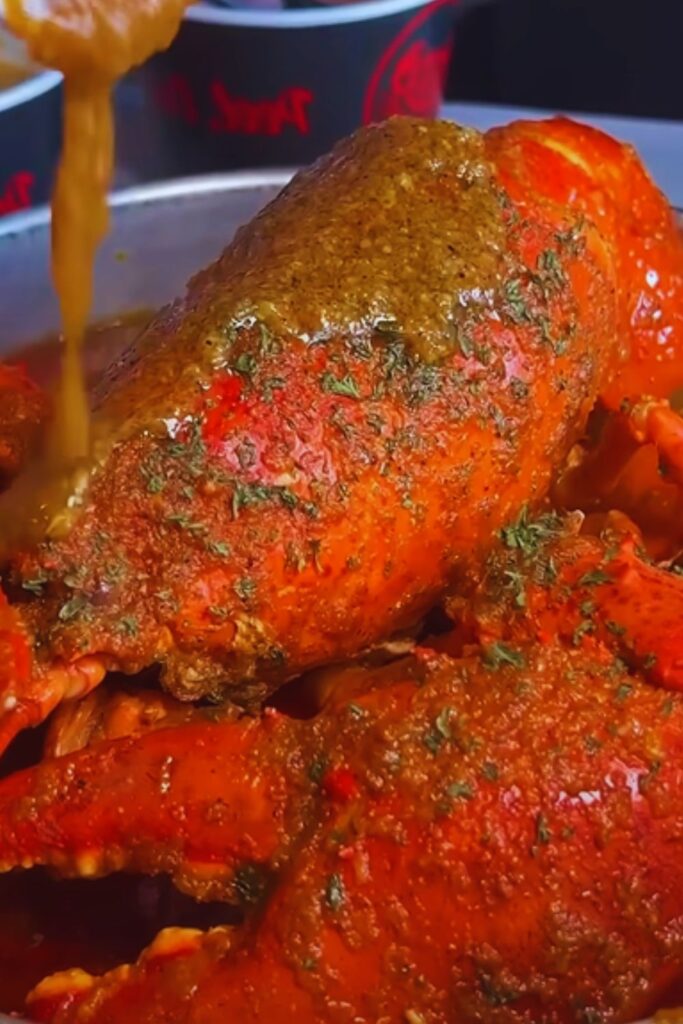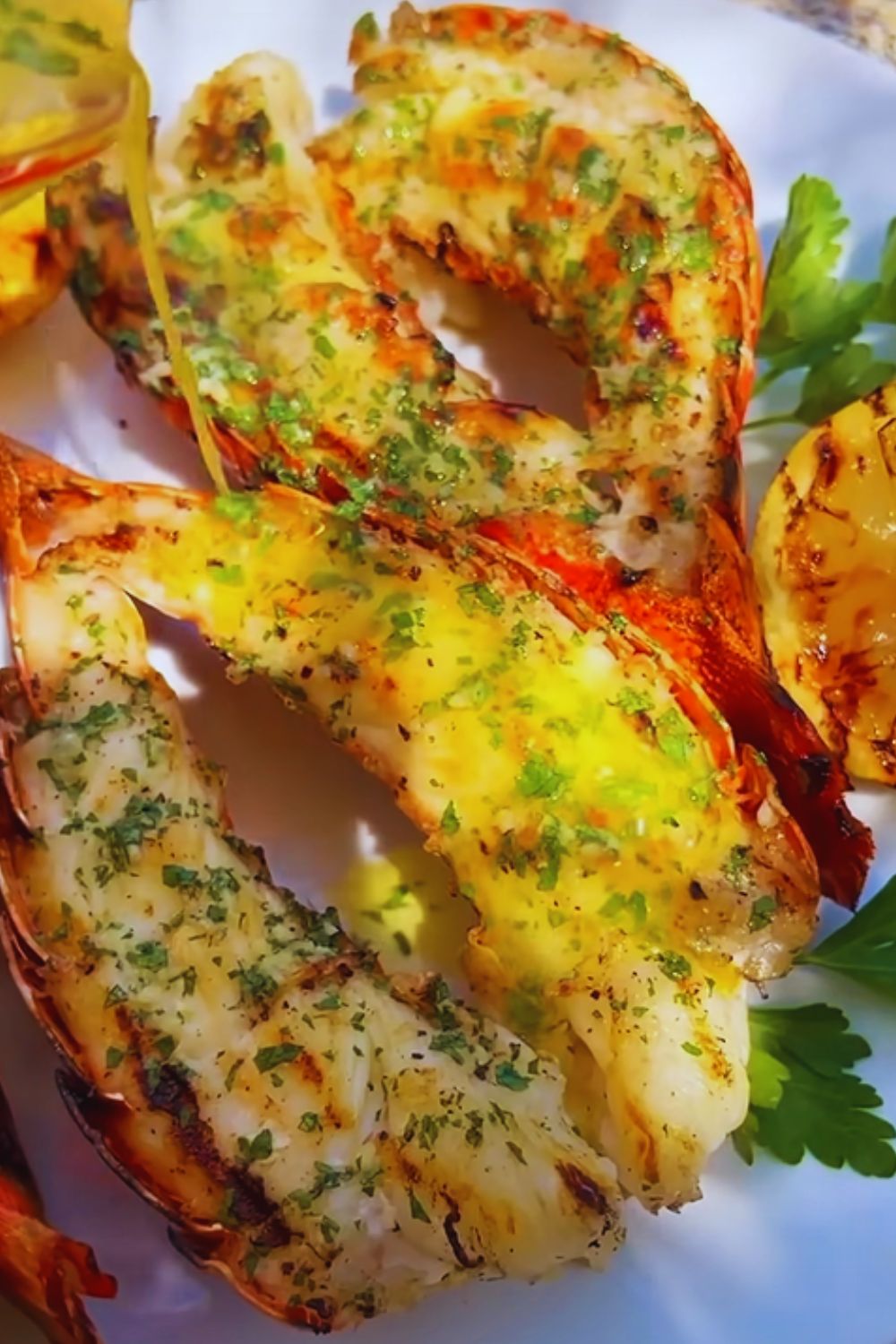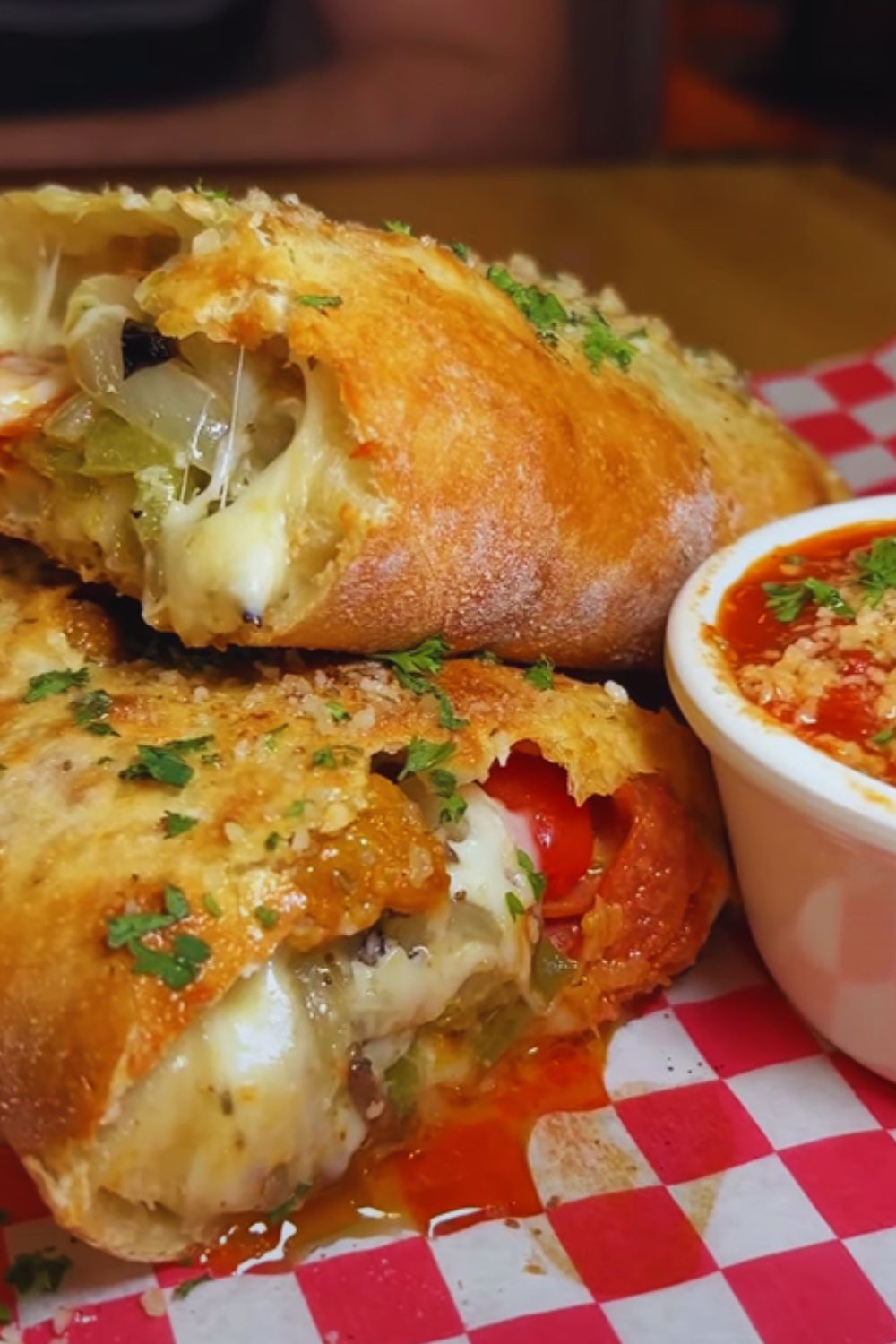Have you ever found yourself craving that buttery, garlicky, perfectly seasoned shrimp scampi from Red Lobster, but didn’t want to leave the comfort of your home? I know I have! After countless experiments in my kitchen and gathering insights from culinary experts, I’ve finally mastered recreating this iconic dish. Today, I’m thrilled to share with you my perfected copycat recipe of Red Lobster’s famous shrimp scampi that will transport your taste buds straight to the restaurant.
The Magic Behind Red Lobster’s Shrimp Scampi
Before diving into the recipe, let’s understand what makes Red Lobster’s shrimp scampi so irresistible. The magic lies in the perfect balance of butter, garlic, and white wine, complemented by the succulent tenderness of perfectly cooked shrimp. The dish is simple yet sophisticated, making it a favorite for seafood lovers everywhere.
What sets this particular shrimp scampi apart is the restaurant’s attention to detail: the precise cooking time, the quality of ingredients, and that signature sauce that’s both rich and light simultaneously. It’s comfort food that feels like a special occasion meal.
Essential Ingredients for Authentic Flavor
The foundation of any great recipe is quality ingredients. Here’s what you’ll need to recreate this Red Lobster classic:
| Ingredient | Quantity | Notes |
|---|---|---|
| Large shrimp (21-25 count) | 1 pound | Peeled and deveined, tails on |
| Unsalted butter | 6 tablespoons | Divided usage |
| Olive oil | 2 tablespoons | Extra virgin preferred |
| Garlic | 6-8 cloves | Freshly minced |
| White wine | 1/4 cup | Dry variety like Pinot Grigio or Sauvignon Blanc |
| Lemon juice | 2 tablespoons | Freshly squeezed |
| Lemon zest | 1 teaspoon | From organic lemon if possible |
| Red pepper flakes | 1/4 teaspoon | Adjust to taste |
| Fresh parsley | 1/4 cup | Finely chopped |
| Salt | 1/2 teaspoon | Sea salt or kosher salt |
| Black pepper | 1/4 teaspoon | Freshly ground |
| All-purpose flour | 1 tablespoon | For sauce thickening |
| Chicken broth | 1/4 cup | Low sodium |
Equipment You’ll Need
Before starting, ensure you have these kitchen tools ready:
- Large skillet (preferably stainless steel or cast iron)
- Sharp knife
- Cutting board
- Measuring cups and spoons
- Wooden spoon or silicone spatula
- Microplane zester
- Garlic press (optional)
- Serving platter
Step-by-Step Preparation Method

1. Prepare the Shrimp
- Rinse shrimp under cold water
- Pat dry thoroughly with paper towels
- Season with 1/4 teaspoon salt and 1/8 teaspoon black pepper
- Set aside while preparing other ingredients
2. Create the Flavor Base
- Heat a large skillet over medium heat
- Add 2 tablespoons butter and 2 tablespoons olive oil
- Once butter is melted, add minced garlic
- Sauté for 30-45 seconds until fragrant (be careful not to brown)
- Add red pepper flakes and stir for 10 seconds
3. Cook the Shrimp
- Increase heat to medium-high
- Add shrimp to the skillet in a single layer
- Cook for 1-2 minutes per side until just turning pink
- Avoid overcooking as shrimp will continue cooking in the sauce
- Remove shrimp to a plate and set aside
4. Create the Signature Sauce
- Add white wine to the same skillet
- Scrape the bottom to release flavor bits (deglazing)
- Allow wine to reduce by half (about 2 minutes)
- Add chicken broth and lemon juice
- Simmer for 2 minutes
5. Thicken the Sauce
- In a small bowl, mix remaining 4 tablespoons of softened butter with 1 tablespoon flour
- Gradually whisk this mixture into the simmering sauce
- Continue stirring until sauce thickens slightly (about 1-2 minutes)
6. Final Assembly
- Return shrimp to the skillet
- Add lemon zest and parsley
- Toss gently to coat shrimp in sauce
- Season with remaining salt and pepper if needed
- Simmer for 1 minute to warm shrimp through
7. Serving Presentation
- Transfer to a warm serving dish
- Garnish with additional fresh parsley and lemon wedges
- Serve immediately for best flavor and texture
The Secret to Restaurant-Quality Results
Through my experimentation, I’ve discovered several professional techniques that elevate this dish from good to extraordinary:
Term: Temperature Control : Maintaining the right heat level prevents both undercooked and rubbery shrimp. Medium-high heat gives that slight caramelization without overcooking.
Term: Mise en Place : Having all ingredients prepared and measured before cooking ensures smooth execution, especially important since shrimp cooks quickly.
Term: Deglazing : Using wine to scrape up the flavorful bits from the pan bottom incorporates complex flavors into the sauce that many home cooks miss.
Term: Butter Mounting : Adding cold butter at the end creates an emulsified, silky texture that restaurants achieve but home cooks often overlook.
Term: Carryover Cooking : Removing shrimp slightly before they’re fully done accounts for continued cooking in the hot sauce.
Nutritional Information
For those watching their nutritional intake, here’s a breakdown per serving (serves 4):
| Nutrient | Amount | % Daily Value* |
|---|---|---|
| Calories | 310 | – |
| Total Fat | 21g | 27% |
| Saturated Fat | 11g | 55% |
| Cholesterol | 185mg | 62% |
| Sodium | 890mg | 39% |
| Total Carbohydrates | 5g | 2% |
| Dietary Fiber | 0.5g | 2% |
| Sugars | 0.5g | – |
| Protein | 24g | 48% |
| Vitamin A | 500IU | 10% |
| Vitamin C | 8mg | 13% |
| Calcium | 80mg | 8% |
| Iron | 2mg | 11% |
*Percent Daily Values based on a 2,000 calorie diet
Variations to Try
While the classic recipe is perfect as is, I’ve developed some delicious variations that maintain the essence of the original while offering new flavor dimensions:
Creamy Shrimp Scampi
- Add 1/4 cup heavy cream to the sauce
- Reduce wine to 2 tablespoons
- Add 2 tablespoons grated Parmesan cheese at the end
Herb-Infused Scampi
- Incorporate 1 teaspoon fresh thyme leaves
- Add 1 tablespoon fresh basil, chiffonade
- Include 1 teaspoon fresh rosemary, finely minced
Spicy Cajun Scampi
- Add 1 teaspoon Cajun seasoning to the shrimp
- Increase red pepper flakes to 1/2 teaspoon
- Add 1/4 cup diced bell peppers to the sauté
Mediterranean Scampi
- Add 1/4 cup halved cherry tomatoes
- Include 2 tablespoons capers
- Garnish with 2 tablespoons crumbled feta cheese
Serving Suggestions

The versatility of shrimp scampi makes it perfect for various serving styles:
Classic Pairings
- Buttered linguine or angel hair pasta
- Crusty French bread for sauce dipping
- Steamed white rice
- Roasted asparagus or broccoli
- Fresh garden salad with lemon vinaigrette
Creative Accompaniments
- Zucchini noodles for a low-carb option
- Creamy polenta
- Garlic mashed potatoes
- Grilled vegetables
- Quinoa pilaf
Common Mistakes to Avoid
In my journey to perfect this recipe, I’ve made several mistakes that you can now avoid:
- Using small shrimp: Smaller shrimp overcook quickly and don’t provide the satisfying bite of larger ones. Always opt for large or jumbo shrimp (21-25 count or larger).
- Overcooking the garlic: Burned garlic imparts a bitter taste. Sauté just until fragrant, about 30-45 seconds.
- Skimping on butter: While it might be tempting to reduce the fat, the butter is essential for that authentic Red Lobster flavor and silky sauce texture.
- Overcrowding the pan: Cook shrimp in a single layer with space between them. This ensures proper caramelization rather than steaming.
- Using pre-bottled lemon juice: The fresh, bright flavor of real lemons makes a significant difference in the final taste.
- Oversalting: Remember that reducing the sauce concentrates the saltiness. It’s better to adjust seasoning at the end.
Make-Ahead and Storage Tips
Preparation Options
- Clean and devein shrimp up to 24 hours ahead, storing covered in the refrigerator
- Prepare garlic, zest lemons, and chop herbs up to 8 hours ahead
- Pre-measure all ingredients for quick assembly
Storage Guidelines
| Storage Method | Maximum Time | Quality Notes |
|---|---|---|
| Refrigerator (leftovers) | 2 days | Reheat gently to prevent rubbery texture |
| Freezer (cooked) | Not recommended | Texture deteriorates significantly |
| Refrigerator (raw prepared shrimp) | 1 day | Keep in sealed container |
| Sauce only (refrigerated) | 3 days | Reheat gently, may need thinning |
Reheating Best Practices
- Stovetop: Low heat with a splash of water or broth
- Microwave: 50% power in 30-second intervals
- Avoid boiling when reheating to prevent tough shrimp
Wine Pairing Recommendations
The ideal companion to shrimp scampi is a crisp, acidic white wine that complements the richness of the butter sauce while enhancing the sweetness of the shrimp.
Some excellent options include:
- Pinot Grigio: Light body with mineral notes
- Sauvignon Blanc: Bright acidity with citrus notes
- Albariño: Floral aromas with stone fruit flavors
- Vermentino: Herbal notes with good minerality
- Dry Riesling: Slight sweetness balances the garlic
Cost-Saving Tips

Creating restaurant-quality shrimp scampi doesn’t have to break the bank:
- Buy frozen shrimp: Often less expensive than “fresh” (which is usually previously frozen anyway) and can be purchased on sale.
- Check international markets: Asian and Latin grocery stores often sell seafood at better prices.
- Use cooking wine: While not ideal, cooking wine works in a pinch if you don’t have regular white wine on hand.
- Grow your own herbs: Parsley, in particular, is easy to grow in a small pot on a windowsill.
- Substitute ingredients: Salted butter can replace unsalted (just reduce added salt). Bottled lemon juice can work in emergencies.
- Portion control: Serve with filling side dishes to make the shrimp go further.
Frequently Asked Questions
Q: Can I use frozen shrimp for this recipe? Absolutely! In fact, most “fresh” shrimp at supermarkets has been previously frozen. Just thaw completely in the refrigerator overnight or in a colander under cold running water for 5-7 minutes. Make sure to pat them completely dry before cooking.
Q: What can I substitute for white wine? If you prefer to cook without alcohol, substitute with additional chicken broth plus 1 tablespoon of white wine vinegar or fresh lemon juice to add acidity. You’ll miss some flavor complexity, but it will still be delicious.
Q: How do I know when the shrimp are perfectly cooked? Perfectly cooked shrimp form a “C” shape and turn opaque pink with a slight translucency at the center. If they curl into a tight “O” shape, they’re overcooked. Remember, they’ll continue cooking slightly when returned to the sauce.
Q: Can I make this dish ahead for a dinner party? I recommend cooking the sauce ahead and refrigerating it, then reheating gently and cooking the shrimp fresh just before serving. This prevents the shrimp from becoming tough and ensures the best texture.
Q: What’s the best way to devein shrimp while leaving the tails on? Use kitchen scissors or a sharp paring knife to cut along the back of the shrimp. Open the cut and remove the dark vein with the tip of your knife or a toothpick, leaving the tail intact.
Q: Can I make this spicier? Definitely! Increase the red pepper flakes to 1/2 or 1 teaspoon, or add a diced jalapeño or serrano pepper when sautéing the garlic.
Q: How can I make this recipe dairy-free? Substitute the butter with a high-quality dairy-free butter alternative and add a tablespoon of nutritional yeast for richness. The flavor profile will change slightly, but it will still be delicious.
Q: Why does restaurant shrimp scampi taste better than homemade? Restaurants typically use extremely high heat cooking methods that are difficult to replicate at home, and they aren’t shy with butter and salt. They also often add a touch of MSG or other flavor enhancers that boost the umami taste.
A Note on Sustainability
As a seafood lover, I’ve become increasingly conscious of sustainable fishing practices. When purchasing shrimp, look for these certifications:
- Marine Stewardship Council (MSC)
- Aquaculture Stewardship Council (ASC)
- Best Aquaculture Practices (BAP)
U.S. wild-caught and U.S. farmed shrimp are generally considered sustainable choices. If possible, avoid imported shrimp from regions with poor environmental regulations.
My Personal Journey with This Recipe
After visiting Red Lobster for a special birthday dinner, I became obsessed with recreating their shrimp scampi at home. My first attempts were disappointing—either too garlicky, too bland, or with overcooked shrimp. Through dozens of test batches and consulting with a chef friend who once worked at a seafood restaurant chain, I gradually refined the technique.
The breakthrough came when I learned about the importance of butter quality and the specific emulsion techniques used in restaurant kitchens. Once I incorporated these professional methods, my homemade version finally achieved that elusive restaurant-quality taste.
Now, this has become my go-to impressive dinner that appears complicated but comes together in less than 30 minutes. It’s perfect for date nights, family gatherings, or when I just want to treat myself to something special without the restaurant price tag.
Final Tips for Success
As a final note, remember these key points for shrimp scampi success:
- Quality matters: Use the freshest ingredients you can find, especially for the shrimp, garlic, and lemons.
- Timing is everything: Have all ingredients prepped and ready before you begin cooking, as the process moves quickly once started.
- Trust your senses: The smell of garlic turning fragrant, the visual cue of shrimp turning pink, and the sound of wine sizzling in the pan all guide you better than strict cooking times.
- Balance is key: The magic of this dish lies in the perfect balance of butter richness, garlic pungency, wine acidity, and the natural sweetness of the shrimp.
- Serve immediately: Shrimp scampi is at its absolute best when served piping hot, directly from skillet to plate.
I hope this comprehensive guide helps you recreate the famous Red Lobster shrimp scampi experience in your own kitchen. Once mastered, this recipe will become a treasured part of your cooking repertoire, impressing family and friends with restaurant-quality results that are surprisingly simple to achieve.



